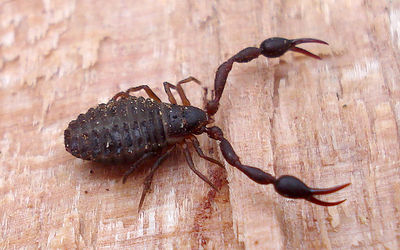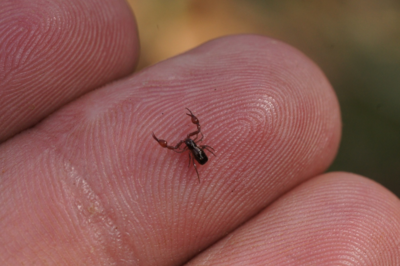Pseudoscorpions
Overview


Pseudoscorpions are an order of the class belonging to arachnida., related to ticks, mites, scorpions, and spiders. Thus, pseudoscorpions are joint-legged and are invertebrates. They have eight legs and also have relatively large pedipalps, compared to their overall size. Pedipalps are almost like claws, or pinchers, strongly resembling those of a scorpion. The size of these animals are very small, about 2-8 millimeters in length. [1] Because of their small size, they often go unnoticed, despite the fact that they live in many different environments. Pseudoscorpions are not harmful. In fact, they eat many small arthropods, helping with pest control. [1] There are over 3,300 known species, and 200 in north America. [4]
Description & Characteristics
- A common house pseudoscorpion is usually between three and four millimeters.
- Color: yellowish to a brown
- Body: 12- segment abdomen, which only 10 are visible. These segments are protected by plates made of chitin.
- Shape: flat teardrop or pear like shaped body
- Pedipalps: Claw like. over twice the length of their legs. If they were completely extended, they would measure about seven to nine millimeters across. [1]
- Making up their pedipalps is an immobile hand and a finger. Separate moveable fingers are controlled by the adductor muscles. A venom gland and venom duct are usually also located in the mobile finger. This venom is used during hunting. The pseudoscorpion uses this venom to immobilize and and capture their prey. While digesting, they pour a corrosive liquid over their prey to aid in a smooth digestion, then they eat the liquid remains.
- They have a gland in their jaw that spins silk. This silk makes cocoons for mating, molting, or to keep warm in cold weather.